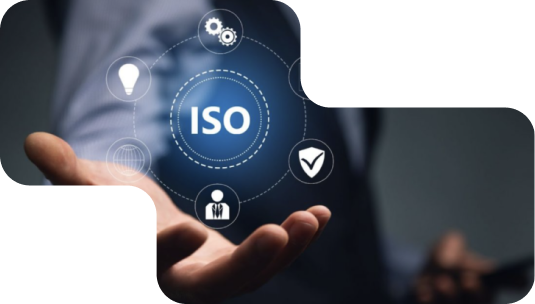ISO 20000: Elevating Your Service Management to Excellence In today’s digitally driven world, efficient and effective service management is a key component of organizational success. ISO 20000, the international standard for service management, is the compass that can guide your organization to deliver top-notch services. SecureITLab is your trusted partner in achieving ISO 20000 certification and elevating your service management to excellence.

By identifying and addressing potential service issues, ISO 20000 helps reduce the risk of service disruptions, which can be detrimental to an organization’s reputation.
Achieving ISO 20000 certification sets you apart in the market, signifying your commitment to service excellence and providing a competitive edge.
ISO 27001 assists organizations in establishing and maintaining an effective ISMS. It addresses risks and vulnerabilities, safeguards against security breaches, and helps organizations meet legal and regulatory requirements.
The standard promotes efficient service management practices, which can lead to cost savings and improved operational efficiency.
The transition from ISO 27001:2013 to ISO 27001:2022 is a critical step to ensure your information security practices remain up to date. ISO standards evolve to address emerging threats and best practices in the industry. Here’s an overview of the transition:

SecureITLab offers Tailored solutions to address your organization's unique business Continuity needs, ensuring an efficient and effevtive journey toward ISO 22301 certification.

Our team brings extensive experience in business continuity and ISO 22301 compliance, enabling us to provide insights and expertise specific to business resilience.

We are committed to your organization's business continuity journey. Our experts provide Continuous support to help you maintain and continuously improve your Business Continuity Management System.

We assist in developing the necessary documentation and help with the practical implementation of ISO 22301 requirements, ensuring a smooth path to certification.

Cybersecurity Maturity Assessment

Assess the cyber security posture

Assess the cyber security posture

Assess the cyber security posture

Assess the cyber security posture

Assess the cyber security posture

Assess the cyber security posture

Assess the cyber security posture

Assess the cyber security posture

Assess the cyber security posture

Assess the cyber security posture

Assess the cyber security posture

Assess the cyber security posture of your organization

Assess the cyber security posture of your organization

Assess the cyber security posture of your organization

Assess the cyber security posture of your organization

Assess the cyber security posture of your organization

Assess the cyber security posture of your organization

Assess the cyber security posture of your organization

Assess the cyber security posture of your organization

Assess the cyber security posture of your organization

Assess the cyber security posture of your organization

Assess the cyber security posture of your organization

Assess the cyber security posture of your organization

Assess the cyber security posture of your organization

Information security, cybersecurity and privacy protection — Information security management systems

Security techniques — Extension to ISO/IEC 27001 and ISO/IEC 27002 for privacy information management

Security and resilience — Business continuity management systems

Information technology — Security techniques — Code of practice for information security controls based on ISO/IEC 27002 for cloud services

Information technology — Security techniques — Code of practice for protection of personally identifiable information (PII) in public clouds acting as PII processors

Information technology — Service management Part 1: Service management system requirements

Information technology — Artificial intelligence — Management system

Assess the cyber security posture of your organization

Assess the cyber security posture of your organization

Assess the cyber security posture of your organization

Assess the cyber security posture of your organization

Design and implement a data governance framework aligned with business goals and regulatory requirements

Define and assign data stewardship roles for your organization.

Ensure the accuracy, consistency, and completeness of data

Establish consistent, accurate, and controlled master data

Organize data for easy access and use

Ensure compliance with governance policies and regulations

Manage data from creation to disposal

Ensuring organizational alignment and readiness for governance practices

Evaluate data privacy practices against legal and regulatory frameworks

Draft and implement privacy policies that comply with regulations

Map out and document data flows across the organization

Manage requests related to data subject rights

Embed privacy considerations into data management processes

Ensure that thirdparty vendors adhere to data privacy standards

Manage data breaches and minimize the risk of future incidents

Ensure continuous compliance with privacy regulations

Raise awareness and ensure employees understand data privacy responsibilities

Assess the cyber security posture

Assess the cyber security posture

Assess the cyber security posture

Assess the cyber security posture of your organization
